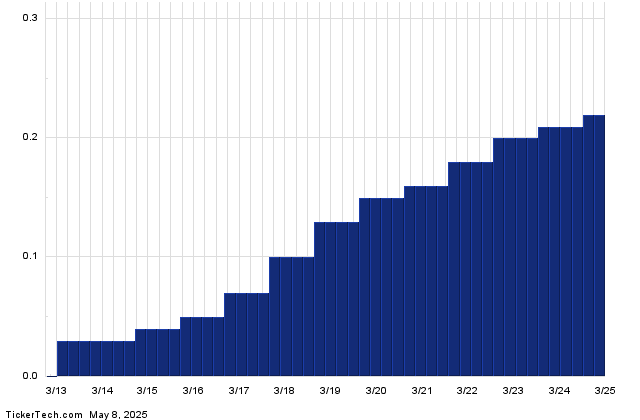Crude Oil and Gasoline Prices Decline Amid Market Pressure
June WTI crude oil (CLM25) recorded a decrease of -0.45 (-0.76%), while June RBOB gasoline (RBM25) fell by -0.0319 (-1.55%) today. Both commodities reversed early gains, influenced primarily by a strengthening dollar.
Initially, crude prices climbed in anticipation of easing trade tensions, following an agreement between the US and China to engage in trade talks this weekend. Additionally, the People’s Bank of China (PBOC) announced interest rate cuts and adjustments to the reserve requirement ratio for banks, which is expected to boost economic growth and energy demand in China, the world’s second-largest crude consumer.
The latest weekly EIA inventory report provided mixed signals. While crude inventories decreased more than analysts anticipated, gasoline supplies unexpectedly increased.
OPEC+ Production Plans and Global Market Concerns
Crude prices hit a four-week low on Monday amid worries about a global oil surplus. This followed OPEC+’s announcement on Saturday to increase crude production by 411,000 barrels per day (bpd) in June. Saudi Arabia hinted that further production increases could follow, aiming to bring prices down and address oversupply issues from certain OPEC+ members like Kazakhstan and Iraq.
The group is gradually reversing a two-year production cut, restoring a total of 2.2 million bpd. Earlier, OPEC+ had scheduled a complete restoration of production between January and late 2025, but now it is not anticipated to be fully restored until September 2026. In April, OPEC’s crude production fell by -200,000 bpd to 27.24 million bpd.
Geopolitical Factors and Supply Dynamics
New sanctions on Russian crude could further limit global oil supplies, providing support for prices. Senator Lindsey Graham announced that he has support from 72 senators for a bill imposing “bone-crushing” new sanctions on Russia, including a 500% tariff on oil imports from countries that purchase Russian crude and prohibiting U.S. citizens from acquiring Russian sovereign debt.
Simultaneously, the US and Iran have made progress in negotiations regarding Iran’s nuclear program. Both sides are scheduled to meet again in Europe this week. An agreement could result in the US lifting export restrictions on Iranian crude oil, potentially flooding the global market with additional supplies, which would be bearish for crude prices.
Storage and Domestic Production Trends
A decline in crude oil held in tankers is considered bullish for prices. Vortexa reported a -14% week-over-week decrease in crude stored on tankers that had been stationary for over a week, totaling 79.84 million barrels as of May 2.
Supportive measures, such as sanctions imposed by the US on January 10 targeting Russia’s oil industry, could also affect global supply. These sanctions focused on companies like Gazprom Neft and Surgutneftgas, which together accounted for roughly 30% of Russia’s oil tanker exports in early 2024. Additionally, Russian oil product exports reached 3.45 million bpd in March, a five-month high, despite ongoing sanctions.
This week’s EIA report revealed mixed results for crude and gasoline inventories. Gasoline inventories rose unexpectedly by +188,000 barrels, contrary to forecasts for a -1.2 million barrel draw. Meanwhile, EIA crude inventories fell by -2.03 million barrels, surpassing estimates of a -1.85 million barrel decrease. Distillate stockpiles also declined, reaching a 17-month low.
As of May 2, US crude inventories were reported to be -7.3% below the seasonal five-year average. Gasoline inventories were -3.1% lower, while distillate inventories fell by -13.1% compared to historical averages. In the week ending May 2, US crude production dipped by -0.7% to 13.367 million bpd, trailing slightly behind the record high of 13.631 million bpd recorded in early December.
Baker Hughes reported a decline in active US oil rigs, which fell by 4 to a total of 479 rigs, still above the three-and-a-quarter-year low of 472 rigs noted in January 2023. The count has decreased significantly from the five-year high of 627 rigs in December 2022.
On the date of publication, Rich Asplund did not hold any positions in the securities mentioned in this article. All information and data presented are for informational purposes only.
More news updates available.
The views expressed herein are those of the author and do not necessarily reflect the views of Nasdaq, Inc.




